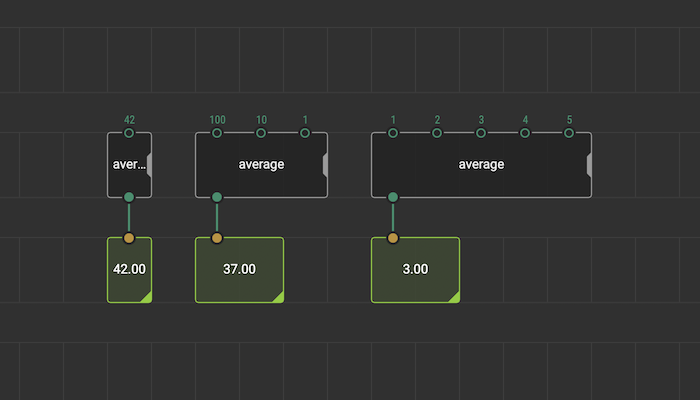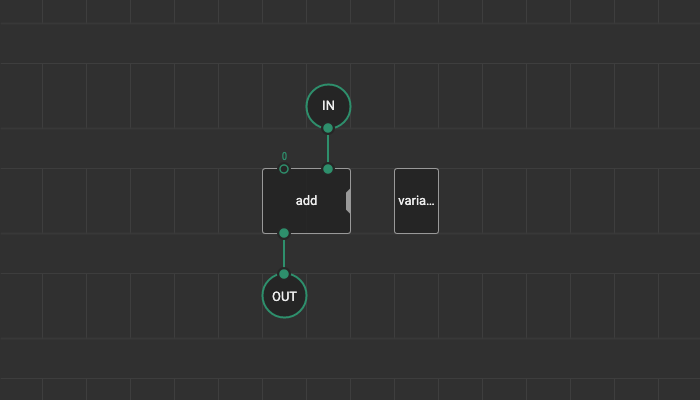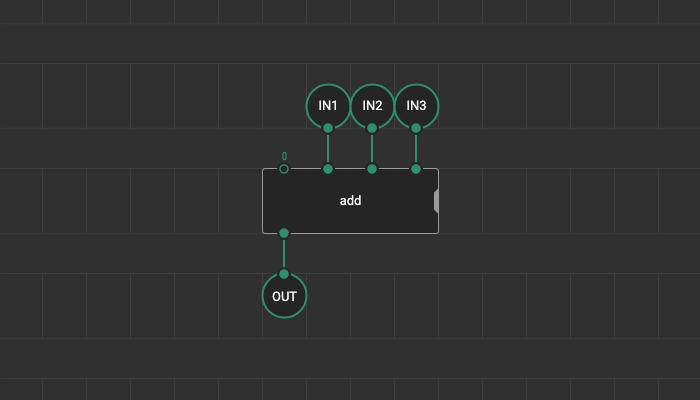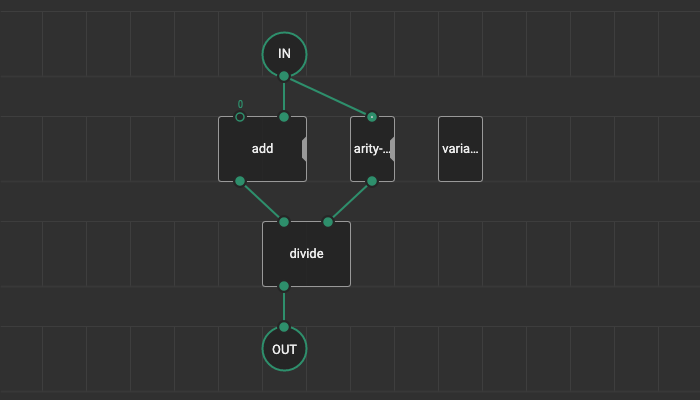Creating variadic-pass Nodes
variadic-pass nodes allow to create wrappers around other variadic nodes. Such wrappers have much less strict requirements for input and output pins and allow to hide implementation details from the end user.
Let’s create the average node that looks like this:

It will add input values together and divide the sum by the number of inputs. Note that there are no accumulator and shared inputs, all the input pins are variadic.
Markers #
Just like with regular variadics, you will need to place a special marker node on your patch. Find the marker node under the xod/patch-nodes library. You need variadic-pass-1, variadic-pass-2, or variadic-pass-3. The number defines the arity step, that is the group size by which the rightmost input pins replicate.
Let’s start creating our average patch already. First, we’ll deal with “add input values together” part. Add a numeric input and output, add and variadic-pass-1 nodes:

Expansion of variadic-pass nodes #
Unlike regular regular variadic nodes, during transpilation variadic-pass nodes are not expanded into a cascade. Instead, the input terminals propagate the arity level set down to the variadic nodes to which they link. The arity level gets added to the design-time arity level. Then the links incoming to the outer variadic-pass node are directly transferred/replicated to the inner variadic nodes.
Here is what would happen under the hood with the node we just made when it’s expanded with arity level 3:

And after that’s done, the expansion of regular variadic nodes takes place.
Getting arity level of a variadic-pass node #
Now let’s build the rest of out average node. To do that, we need a way to know the arity level of our node. For this exact purpose, there is a arity-level node in xod/core. When linked to a variadic-pass input, it will output the arity level of the parent node. Note that there are no magic tricks going on — it’s built with methods available to any other xoder, and I’d recommend playing with it and checking out how it is implemented.
Here is how it’s used to build a finished version of the average node:

Note that there are two variadic nodes connected to a single variadic-pass input now. It’s perfectly legal and both will be expanded the way we saw earlier.